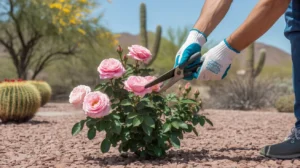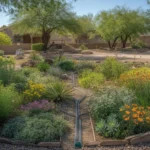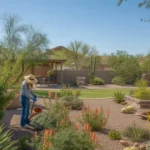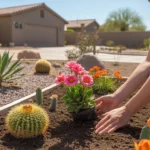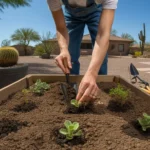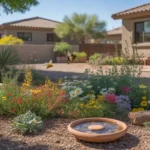As the warmth of spring returns to the Southeast Valley, it’s time to wake up your garden from its winter slumber. With some essential spring care, you can revitalize your outdoor space and set the stage for a lush, vibrant growing season. From cleaning up winter debris to pruning and planting, a bit of effort now will pay off in spades as your Southeast Valley garden springs back to life.
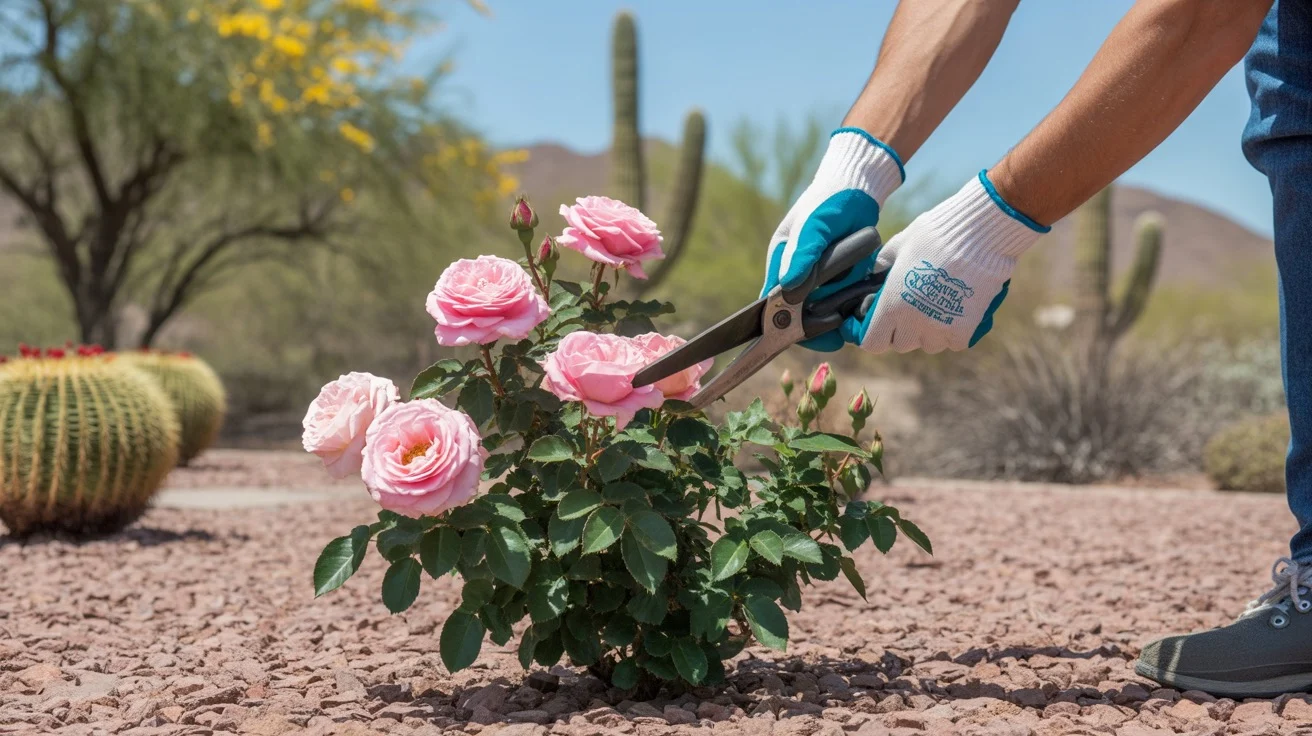
Survey the Landscape and Make a Plan
Before diving into spring garden chores, take a walk around your yard to assess the state of your landscape. Look for any damage that may have occurred over winter, such as broken branches, eroded beds, or dead plants. Make note of bare spots that could use some new plantings.
Sketch out a rough plan of the tasks you want to tackle this spring. Consider your garden goals for the year. Do you want to expand your vegetable patch, plant a new tree, or add more color with flowering perennials? Having a roadmap will help keep you on track as you move through your spring care checklist.
If you’re not sure where to start, consider consulting with a local landscaper or garden center. They can provide expert guidance tailored to the unique growing conditions and plant palette of the Southeast Valley.
Clean Up Winter Debris
Start your spring garden refresh with a thorough cleanup. Remove any fallen leaves, dead foliage, and spent blooms that have accumulated over winter. This will help prevent disease and pests from taking hold as the weather warms.
Use a rake or leaf blower to gather debris from lawns and beds. If you have a compost bin, toss in the leaves and dead plant matter to create nutrient-rich compost for your garden. Clear out gutters and downspouts to ensure proper drainage during spring rains.
As you clean, take care not to disturb emerging bulbs or new growth. Many Southeast Valley favorites like desert marigold and globe mallow begin sprouting early in spring.
Prune and Shape Trees and Shrubs
Spring is the ideal time to prune many trees and shrubs, before they begin active new growth. Pruning helps maintain plant health, promotes air circulation, and encourages fuller, more attractive growth habits.
Start by removing any dead, damaged or diseased wood. Look for crossing branches that rub together, which can create wounds that invite pests and disease. Thin out dense growth to allow light and air to reach the center of the plant.
When pruning flowering shrubs, be mindful of their bloom time. Spring-flowering shrubs like Texas sage should be pruned immediately after flowering. Save major pruning of summer bloomers like red bird of paradise for early spring.
Prepare and Enrich Garden Beds
Before planting, it’s crucial to prep your garden beds. Clear out any weeds that have sprouted up, making sure to pull them out by the roots. Loosen compacted soil with a garden fork or tiller to improve drainage and aeration.
Mix in a layer of compost or well-rotted manure to enrich the soil with organic matter. This will help retain moisture, suppress weeds, and provide a slow-release source of nutrients for your plants. If you haven’t had your soil tested recently, now is a good time to check the pH and adjust as needed.
In the low desert regions of the Southeast Valley, it’s especially important to choose a quality soil mix that drains well. Heavy clay soils can be amended with coarse sand and compost to improve texture.
Plant Heat-Loving Vegetables and Herbs
While the spring weather is still mild, it’s a great time to plant vegetables and herbs that thrive in the heat of the low desert summer. Many warm-season favorites can be sown directly in the garden or started indoors and transplanted.
Some top choices for Southeast Valley gardens include:
- Tomatoes
- Peppers
- Squash
- Melons
- Beans
- Basil
- Oregano
- Rosemary
Be sure to choose varieties that are well-adapted to the intense heat and dry conditions of the region. Look for desert-friendly cultivars or those with good heat tolerance.
Add Color with Low-Water Flowering Plants
Spring is a prime time to refresh your garden beds and containers with colorful blooms. In the Southeast Valley, opt for flowering plants that can handle the heat and require minimal water once established.
Some beautiful, low-water options include:
- Penstemons
- Gaillardia
- Angelita daisy
- Desert marigold
- Globe mallow
- Chuparosa
- Damianita
Group plants with similar water needs together to make irrigation easier. Consider adding a layer of mulch around your plantings to help retain soil moisture and regulate temperature.
Give Trees and Shrubs a Deep Drink
As the weather heats up, it’s important to give your established trees and shrubs a deep watering to help them transition into active growth. Even drought-tolerant desert plants benefit from periodic deep irrigation.
Use a soaker hose or drip system to deliver water slowly and efficiently to the root zone. Avoid overhead sprinklers, which can waste water to evaporation and wind drift. Water early in the morning to minimize evaporation and allow foliage to dry before nightfall.
For best results, water deeply and less frequently rather than providing shallow, daily drinks. This encourages plants to develop deep, extensive root systems that are better equipped to handle drought and heat stress.
Mulch Beds to Conserve Moisture and Suppress Weeds
One of the best things you can do for your Southeast Valley garden is to add a layer of organic mulch to your beds. Mulch helps retain soil moisture, moderates temperature fluctuations, and suppresses weed growth.
Choose a natural mulch like shredded bark, wood chips, or straw. Avoid using inorganic materials like rocks or gravel, which can heat up quickly and scorch plant roots. Apply a 3-4 inch layer of mulch around plants, taking care not to pile it up against stems or trunks.
As the mulch breaks down over time, it will enrich the soil with organic matter and nutrients. Replenish the mulch layer as needed throughout the growing season to maintain its benefits.
Tune Up Irrigation Systems
Before the heat of summer arrives, give your irrigation system a tune-up to ensure it’s working efficiently. Check for leaks, clogs, or damaged emitters and make repairs as needed. Adjust spray patterns to avoid overshooting beds or wasting water on hardscapes.
Consider upgrading to a smart irrigation controller that adjusts watering schedules based on local weather conditions. These systems can help you save water and keep your plants healthy by delivering the right amount of moisture at the right time.
If you don’t have an automated irrigation system, set a schedule to manually water your plants deeply and infrequently. Consistency is key to avoiding stress and encouraging deep root growth.
With these spring care tips, your Southeast Valley garden will be primed for a beautiful, bountiful growing season. A little extra effort now will pay off in healthier plants, fewer pests and weeds, and a more vibrant, water-wise landscape to enjoy all year long.

